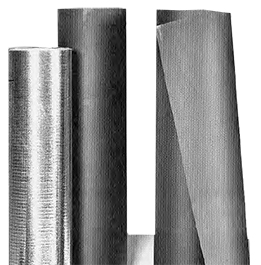Solutions and Treatments for Floors
Noises traveling between vertically adjacent spaces can be problematic for people in either the upper or lower area. Soundown offers a range of treatments for use under all types of finished flooring. The treatments are effective at reducing footfalls, chair squeaks, voices, A/V, and other problem noises.
Our range of treatments includes damping, isolation, and barrier options. Choosing the best one for your project will depend on the stage of construction and type of floor finish.
While the most effective treatments include options that need to be installed during construction or a major remodel, there are effective treatments that can be added under existing floors or when a new floor covering is installed.
The following include suggested treatments for different types of flooring:
Carpeted Floors
Carpeted floors are less often a source of complaint than floors with hard finishes, as the impact reduction and soft surface provide some acoustic benefit to begin with. In cases where more transmission loss is needed to stop noise from travelling between the carpeted room above and a room below, Soundown’s Premium Carpet Underlayment is easily installed and highly effective.
Soundown’s Premium Carpet Underlayment is a composite material that combines a foam carpet padding with an acoustic barrier. The foam layer is installed toward the floor and consists of a unique, high-quality carpet foam that provides a plush under-foot feel while reducing impact noise.
Soundown’s TuffMass acoustic barrier makes up the top surface of the composite. In this arrangement, the mass layer is decoupled from the floor, which greatly improves the acoustic performance of a given mass.
A floor treated with Soundown’s 1/2″ 1lb Premium Carpet Underlayment will provide roughly 20dB(A) reduction of voice when compared to a floor treated with standard 1lb mass loaded vinyl (MLV).
Hardwood or Laminate Floors
For laminate or wood flooring, Soundown’s IsoWalk is an effective, easily installed underlayment. This underlayment both isolates and damps flooring assemblies. As an isolator, the resilience of the materials breaks the transmission path of energy that would excite the ceiling and radiate into the space below. Because IsoWalk is also damped, it converts energy into minuscule amounts of heat instead of allowing it to bounce off the lower face and radiate as noise.
Installing IsoWalk is simple and requires no special tools or equipment. IsoWalk is laid out on top of the substrate, and the finish flooring is simply installed per manufacturer’s instructions.
Tile Floors
For tile floors, IsoWalk is also an excellent choice. The acoustic properties of IsoWalk make it effective at reducing airborne noise, as well as the impact noise that is often the source of complaints from downstairs neighbors.
Because tiles require a substrate that does not flex, a layer of plywood, cement board, or other material is installed between the IsoWalk and the tile. For the best, quietest installation, Soundown suggests that the IsoWalk be bonded to the materials above and below to create a composite panel. Always consult the tile manufacturer’s guidelines when planning your installation.

